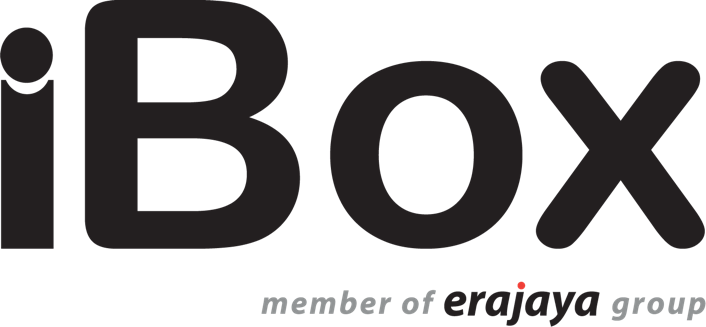Gelombang Strategi AI kini melanda perusahaan besar di Amerika Serikat. Di tengah meningkatnya pendapatan dan aktivitas bisnis, banyak raksasa korporasi justru memilih tidak menambah jumlah karyawan. Pendekatan baru ini menandai perubahan besar dalam cara perusahaan mengejar pertumbuhan bukan lewat ekspansi tenaga kerja, melainkan melalui kecerdasan buatan dan otomatisasi.
Perusahaan seperti JPMorgan Chase, Walmart, Goldman Sachs, Airbnb, Intuit, hingga Meta Platforms mengadopsi pendekatan “no new hiring”. Mereka percaya bahwa investasi dalam teknologi bisa menggantikan sebagian besar fungsi administratif manusia, menghemat biaya, dan meningkatkan produktivitas. Namun, di balik efisiensi tersebut, muncul tantangan sosial dan risiko jangka panjang terhadap tenaga kerja global.
Transformasi Bisnis di Era Digital
Perubahan strategi bisnis besar-besaran ini tidak datang tiba-tiba. Dalam dua tahun terakhir, dunia korporasi menghadapi tekanan ekonomi global, inflasi, dan perubahan cepat akibat kemajuan teknologi. Di tengah ketidakpastian itu, perusahaan memilih jalur efisiensi melalui Strategi AI, bukan perluasan staf.
Pergeseran Paradigma Produktivitas
Kecerdasan buatan, asisten pemrograman, dan digital agents kini menjadi pilar utama produktivitas. Teknologi ini memungkinkan tim kecil menghasilkan kinerja besar. Misalnya, sistem otomatisasi di perusahaan keuangan dapat memproses ribuan transaksi tanpa perlu tambahan pegawai.
AI juga membantu analis dan manajer bekerja lebih cepat, memangkas waktu riset serta pelaporan. Selain itu, sistem chatbot dan virtual assistant kini menggantikan sebagian besar pekerjaan layanan pelanggan, terutama di sektor perbankan dan e-commerce.
Efisiensi Biaya sebagai Prioritas Utama
Perusahaan besar kini sadar bahwa setiap tambahan tenaga kerja berarti peningkatan beban gaji, tunjangan, dan biaya operasional. Dengan menggunakan Strategi AI, beban ini bisa ditekan tanpa mengorbankan produktivitas.
Goldman Sachs, misalnya, memilih mempertahankan ukuran stafnya sambil memperluas kapasitas teknologi. Sementara Walmart berkomitmen menjaga jumlah karyawan tetap sama selama tiga tahun ke depan, memanfaatkan otomatisasi logistik dan analitik permintaan untuk meningkatkan efisiensi rantai pasoknya.
Studi Kasus: Penerapan Strategi AI di Berbagai Industri
Tren “tumbuh tanpa menambah tenaga kerja” kini terlihat di hampir semua sektor utama Amerika. Dari finansial, ritel, teknologi, hingga perhotelan, perusahaan beralih ke strategi berbasis AI untuk memaksimalkan kinerja.
JPMorgan Chase dan Disiplin Pertumbuhan Tenaga Kerja
Bank terbesar di Amerika Serikat ini secara terbuka menyatakan memiliki “bias kuat” untuk tidak menambah staf. CEO Jamie Dimon menegaskan bahwa AI akan menjadi pendorong utama pertumbuhan perusahaan di masa depan. JPMorgan kini mengembangkan lebih dari 300 aplikasi internal berbasis AI untuk menganalisis risiko, menilai kredit, hingga mendeteksi potensi penipuan.
Langkah ini membuat JPMorgan bisa meningkatkan efisiensi sambil memangkas proses manual yang sebelumnya memakan waktu. Namun, di sisi lain, banyak analis menyoroti bahwa strategi ini bisa membatasi peluang kerja baru di sektor perbankan.
Intuit dan Pertumbuhan Tanpa Rekrutmen Baru
Perusahaan perangkat lunak finansial Intuit, pembuat QuickBooks dan TurboTax, menjadi contoh sukses. Mereka tidak mengganti posisi yang kosong akibat karyawan keluar. Meski begitu, pendapatan perusahaan justru naik 16 persen berkat implementasi sistem AI yang membantu pengguna menyelesaikan tugas keuangan lebih cepat.
CEO Intuit mengatakan bahwa AI bukan hanya alat bantu, tetapi fondasi baru dalam cara mereka melayani pelanggan. Dengan sistem otomatis, tim internal bisa fokus pada inovasi dan peningkatan kualitas produk.
Meta Platforms dan Reformasi Birokrasi Internal
Berbeda dengan perusahaan lain, Meta memilih memangkas lebih dari 600 posisi di divisi AI-nya sendiri. Langkah ini diambil bukan karena efisiensi teknologi, tetapi untuk mengurangi birokrasi dan mempercepat pengambilan keputusan. Meta percaya bahwa tim yang lebih ramping bisa lebih gesit dalam mengembangkan produk berbasis AI generatif.
Dampak Sosial dan Ekonomi
Meski Strategi AI membawa efisiensi luar biasa, dampaknya terhadap dunia kerja tidak bisa diabaikan. Banyak ekonom memperingatkan bahwa tren “tanpa rekrutmen baru” bisa memperdalam kesenjangan lapangan kerja dan memperlambat mobilitas sosial.
Tantangan bagi Pencari Kerja
Dengan semakin banyak perusahaan menahan ekspansi staf, pencari kerja menghadapi pasar yang semakin ketat. Posisi entry-level dan administratif menjadi yang paling terdampak. Bahkan lulusan baru dari universitas top pun kini bersaing dengan sistem otomatis yang bisa bekerja 24 jam tanpa istirahat.
Menurut laporan Bureau of Labor Statistics, jumlah lowongan kerja di sektor teknologi dan keuangan menurun hingga 12 persen dalam setahun terakhir, meskipun pendapatan perusahaan meningkat.
Kelelahan dan Stagnasi di Kalangan Karyawan
Karyawan yang tetap bekerja menghadapi beban tambahan. Tanpa peningkatan tim, tugas dan tanggung jawab mereka bertambah, sementara peluang promosi terbatas. Kondisi ini berpotensi menyebabkan burnout dan menurunkan moral kerja.
Sebuah survei internal di Airbnb mengungkapkan bahwa lebih dari 40 persen karyawan merasa beban kerja meningkat sejak perusahaan menghentikan rekrutmen baru. Meski AI membantu efisiensi, keseimbangan antara manusia dan mesin masih menjadi tantangan besar.
Risiko Jangka Panjang untuk Inovasi
Ekonom memperingatkan bahwa strategi efisiensi ekstrem dapat menghambat regenerasi talenta. Tanpa masuknya darah baru, perusahaan bisa kehilangan dinamika dan kreativitas. Dalam jangka panjang, ketergantungan berlebihan pada AI berpotensi membuat organisasi kehilangan naluri manusiawi dalam pengambilan keputusan.
Budaya Baru Staffing: Evaluasi Sebelum Rekrutmen
Salah satu karakter utama dari strategi ini adalah munculnya budaya baru dalam perekrutan. Banyak perusahaan kini tidak lagi otomatis mengganti karyawan yang keluar. Sebaliknya, mereka mengevaluasi apakah posisi tersebut benar-benar diperlukan atau bisa diotomatisasi.
Penilaian Ulang Fungsi Organisasi
Walmart dan Airbnb menerapkan pendekatan ini dengan ketat. Jika seorang manajer keluar, perusahaan tidak langsung membuka lowongan baru. Tim sumber daya manusia bersama pimpinan divisi menilai apakah pekerjaan itu bisa dialihkan ke sistem berbasis AI atau diintegrasikan dengan fungsi lain.
Peran AI dalam Pengambilan Keputusan SDM
AI juga kini digunakan dalam proses evaluasi kinerja dan kebutuhan staf. Sistem analitik membantu perusahaan menentukan area mana yang produktivitasnya bisa ditingkatkan tanpa menambah sumber daya manusia. Hal ini menciptakan lingkungan kerja yang lebih efisien, tetapi juga lebih kompetitif.
Perspektif Ekonomi Global
Kebijakan efisiensi tenaga kerja ini tidak hanya tren sementara di Amerika, tetapi juga berpotensi menjadi model baru di seluruh dunia. Banyak perusahaan Eropa dan Asia mulai meniru pola yang sama.
Kehati-hatian dalam Ekspansi
Kondisi ekonomi global yang belum stabil membuat perusahaan lebih berhati-hati. Naiknya biaya modal dan ketidakpastian geopolitik memperkuat alasan untuk tidak menambah karyawan. Di sisi lain, investasi dalam AI dianggap sebagai langkah aman karena skalabilitasnya tinggi dan biayanya relatif lebih terkendali.
Peluang bagi Industri Teknologi
Di tengah pengetatan staf, industri teknologi justru diuntungkan. Permintaan untuk solusi otomatisasi, AI assistants, dan sistem efisiensi meningkat pesat. Ini membuka peluang bagi startup yang fokus pada pengembangan teknologi produktivitas.
Fenomena Strategi AI menandai babak baru dalam dunia bisnis global. Perusahaan besar Amerika menunjukkan bahwa pertumbuhan tidak selalu harus diiringi dengan ekspansi tenaga kerja. Namun, keberhasilan strategi ini bergantung pada keseimbangan antara efisiensi teknologi dan kesejahteraan manusia.
AI memang dapat menggantikan banyak peran administratif, tetapi tidak bisa menggantikan kreativitas, empati, dan inovasi yang berasal dari manusia. Jika perusahaan mampu menjaga keseimbangan itu, maka efisiensi dan kemanusiaan dapat berjalan berdampingan.
Discover more from Insimen
Subscribe to get the latest posts sent to your email.





























